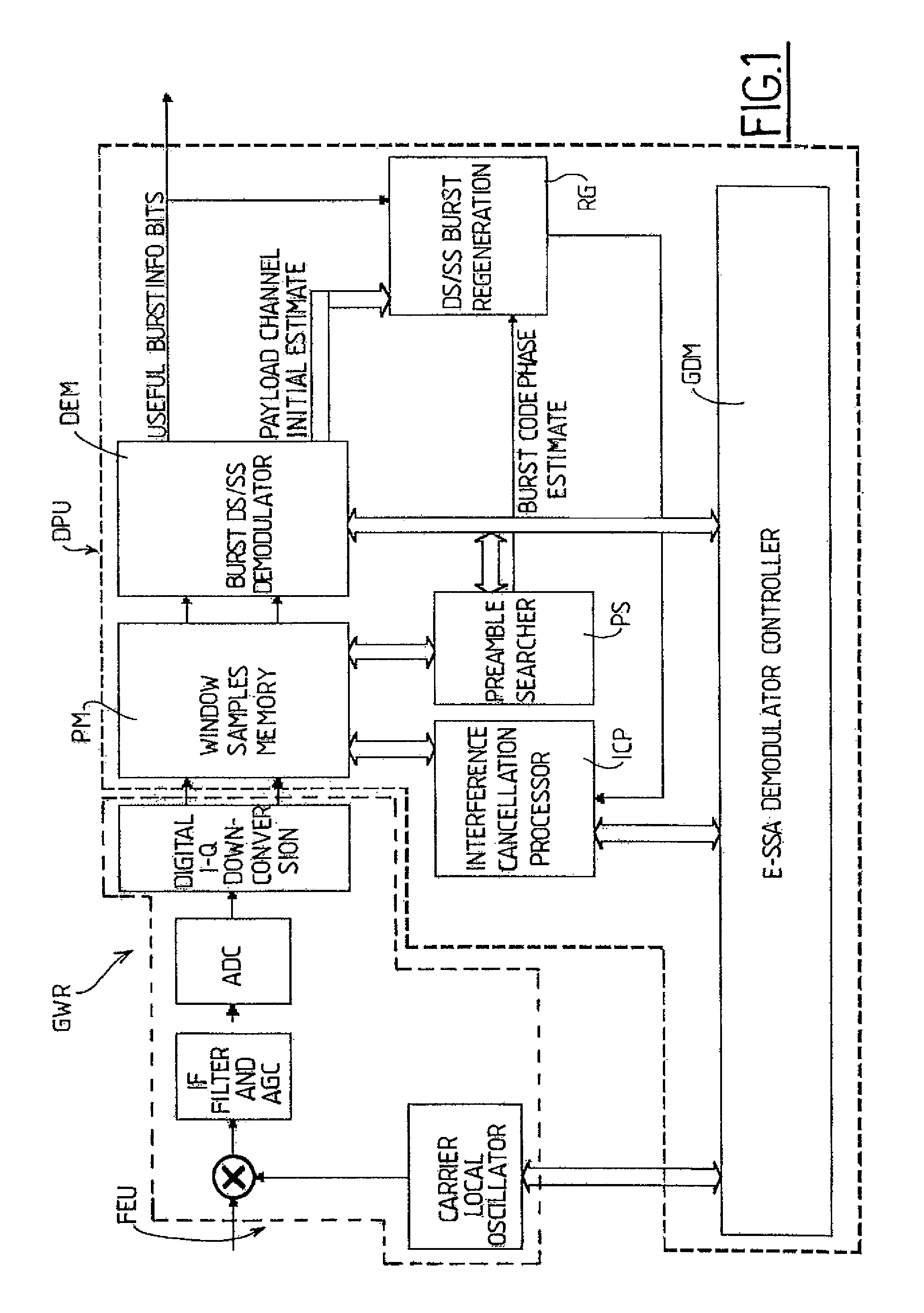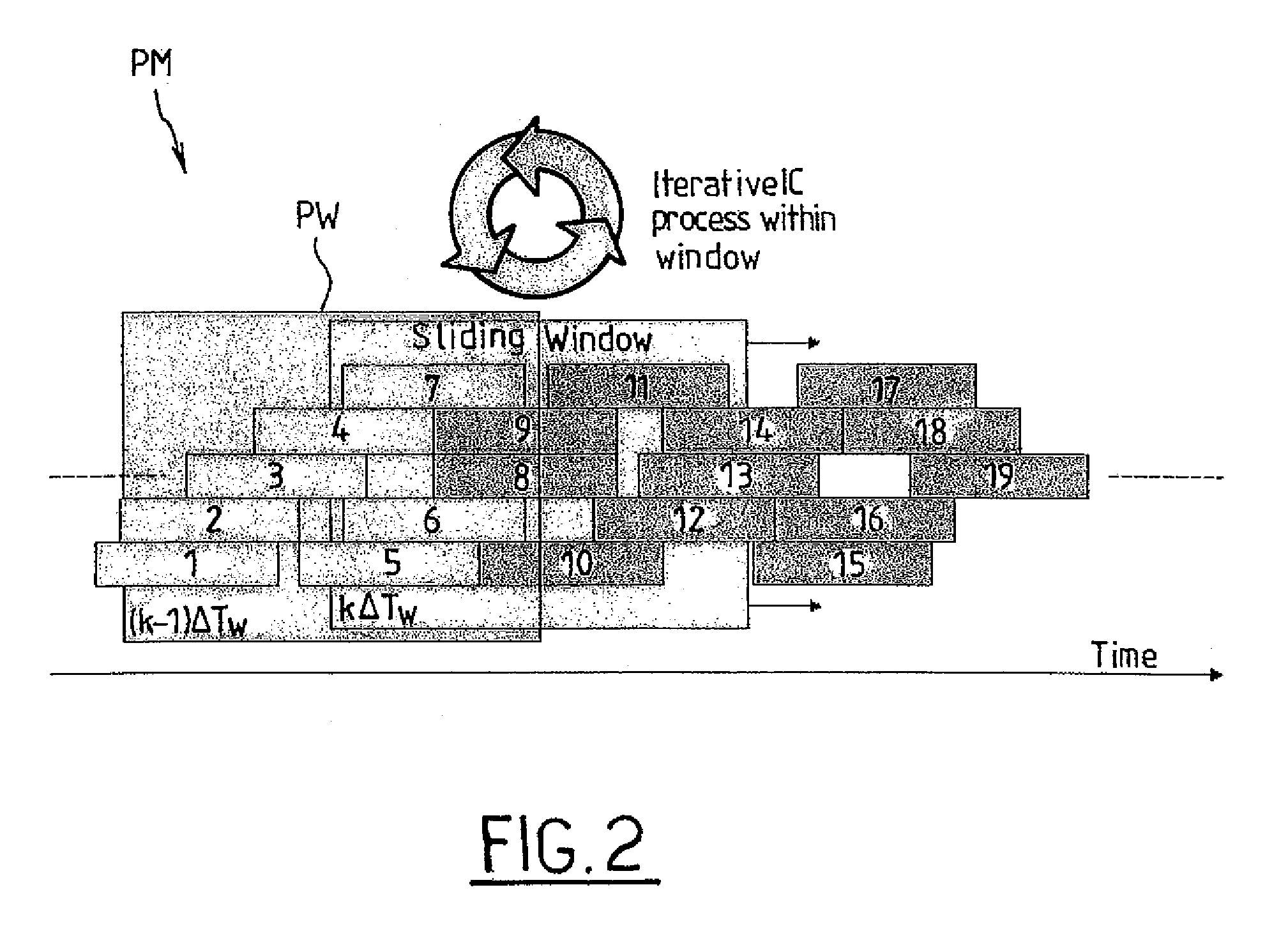Methods, apparatuses and system for asynchronous spread-spectrum communication
a spread-spectrum communication and apparatus technology, applied in the field of methods, apparatuses and systems for asynchronous spread-spectrum communication, can solve the problems of high overhead of forward link signaling, low efficiency and reliability of slotted aloha (sa) protocols in tdma (time division multiple access) systems, and inefficient terminal burst synchronization for large number of terminals, etc., to achieve efficient reuse, reduce forward link signaling overhead, and limit signaling overhead
- Summary
- Abstract
- Description
- Claims
- Application Information
AI Technical Summary
Benefits of technology
Problems solved by technology
Method used
Image
Examples
Embodiment Construction
[0096]A random access scheme according to an embodiment of the invention is based on an “enhanced” spread Aloha scheme (E-SSA), exploiting interference cancellation techniques optimized for packet transmission mode. This scheme provides superior throughput compared to standard SA or SSA, and enhanced robustness to power unbalance at the gateway.
[0097]As discussed above, the idea of carrying out interference cancellation within a SSA scheme has already been disclosed in the prior art. However, there is a lack of practical SSA method to be implemented in a bursty spread-spectrum multi-user communication system of the kind considered here.
[0098]According to an embodiment of the invention, the received signal samples are stored at the gateway burst demodulator in a sliding memory. As incoming packets are successfully decoded at the gateway, their signal samples are regenerated and subtracted from the sliding memory (Successive Interference Cancellation or SIC). Implementing this mechani...
PUM
 Login to view more
Login to view more Abstract
Description
Claims
Application Information
 Login to view more
Login to view more - R&D Engineer
- R&D Manager
- IP Professional
- Industry Leading Data Capabilities
- Powerful AI technology
- Patent DNA Extraction
Browse by: Latest US Patents, China's latest patents, Technical Efficacy Thesaurus, Application Domain, Technology Topic.
© 2024 PatSnap. All rights reserved.Legal|Privacy policy|Modern Slavery Act Transparency Statement|Sitemap



